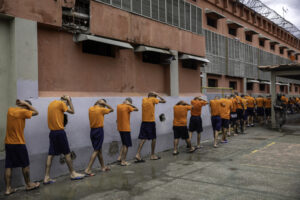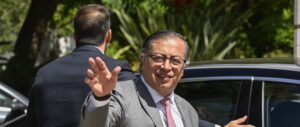The Washington Office on Latin America (WOLA) led a Congressional Delegation to Colombia with Representative James McGovern on August 23 to 30. While in Colombia, we traveled to Medellín, Cartagena, Cordoba, and Bogotá. We met with several human rights organizations, youth groups, local leaders, community groups, and government officials, including President Juan Manuel Santos, to discuss the human rights and labor situation in the country. The following speech by Representative McGovern provides insight into the complexities of violence and peacebuilding in Medellín.
James P. McGovern (MA)
5-Minute Special Order
Morning Hour
Tuesday, September 13, 2011
ALTERNATIVES TO VIOLENCE: HOPE IN MEDELLÍN
M. Speaker, at the end of August, I was part of a week-long fact-finding delegation to Colombia coordinated by the Washington Office on Latin America.
Our first stop was Medellín. Hailed during 2005-2008 as the “Medellín Miracle,” we now know the “miracle” was more illusion than reality, created by the iron fist of paramilitary leader Diego Murillo, alias “Don Berna.” He controlled all criminal activity in the poorest districts, or comunas, that surround central Medellín. Since his 2008 extradition to the U.S., hell has returned to the comunas, as neo-paramilitary drug lords fight for control of drug-trafficking, extortion and other criminal activity.
But the “miracle” wasn’t a total illusion. During those years of relative calm, the municipal government, under Mayor Sergio Fajardo and then his successor, current Mayor Alonso Salazar, made significant investments in youth organizations, education and basic human services in the poorest neighborhoods. In greater Medellin, investments resulted in public parks, recreational spaces, culture and a new public transit system.
These changes, large and small, have helped civil society to better weather and confront the current explosion of violence that keeps Medellín in the ranks of Latin America’s most violent cities.
There are an estimated 3,800 or more gang members in Medellin. About 70 percent of their ranks are made up of young people between the ages of 11 and 17. In the past two years, nearly 2,000 young people between the ages of 11 and 25 have been killed.
We spent an entire day meeting young people and youth organizations in three of the city’s most violent districts, Comunas 13, 8 and 5. Our guides were the dedicated staff of Fundación Mi Sangre. They introduced us to Jhon Jaime Sanchez, Director of Son Batá, an Afro-Colombian group that has achieved international fame by using music to help Comuna 13’s young people find alternatives to violence.
We visited the local YMCA and its director, Alexandra Castillón. The YMCA has long served as an anchor and “neutral space” in Comuna 13. There we met leaders from Hip Hop Red Elite, Hip Hoppers for Peace and the Kolacho School, a music and training school named in memory of a young boy killed in Comuna 13. The groups reach young people through the use of music and dance, helping them become leaders. These youth then use their art to reach others in their schools and on the street with the message of non-violence.
We went across town to Casa de la Cultura, one of the few “neutral spaces” in Comuna 8. We met students and youth groups Diafora, La Villa, AK-47, New Dance and others. Their determination and enthusiasm to create a better future were undeniable. Rap group AK-47 joined with students playing classical music. They put on a stunning rap program against gang violence. I could have listened to their powerful words and music all day.
The day ended sitting on the ground above a small park in Comuna 5, talking with more than 20 youth leaders about their daily lives and how they use art to promote human rights, recapture historic memory, and create a better community. I told them they should run for office because Medellín’s future depended on their leadership.
The next day, our delegation returned to Comuna 5, this time with the Catholic Church and the Mayor’s Advisor on Peace and Reconciliation. We met former and current gang members. We heard impassioned stories about how they want to leave the gangs and the endless violence. It’s not an easy choice. They fear retaliation and not being able to support their families. Many people in Medellín are helping them lay down their arms, but their futures are dangerous and limited. They also lack confidence in the police, some of whom are allied with one faction or another in the gang wars.
These youth put themselves at risk for advocating alternatives to violence and envisioning a future far different from the reality that surrounds them. They deserve our respect and support – not just with funding, but by increasing their visibility and legitimacy.
Rarely in my trips to Colombia have I left a place with such strong and positive feelings. After spending time in the most dangerous areas of the city, I came away with a sense of hope. I often speak about what’s going wrong in Colombia and the many problems that need to be addressed. In Medellín, I found many examples of what’s going right.


